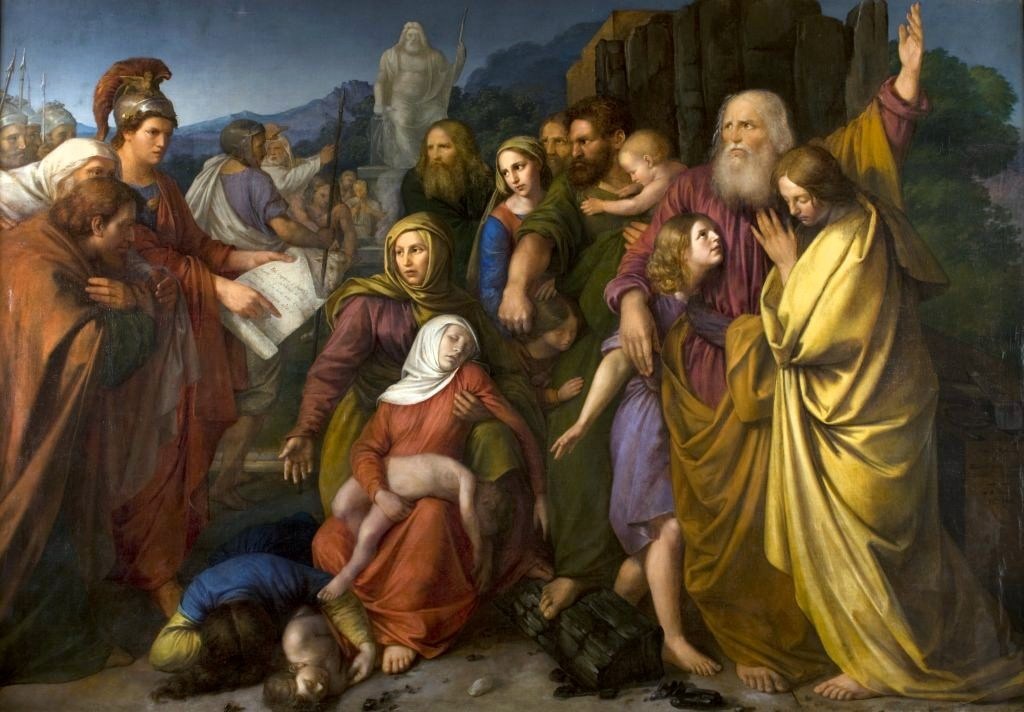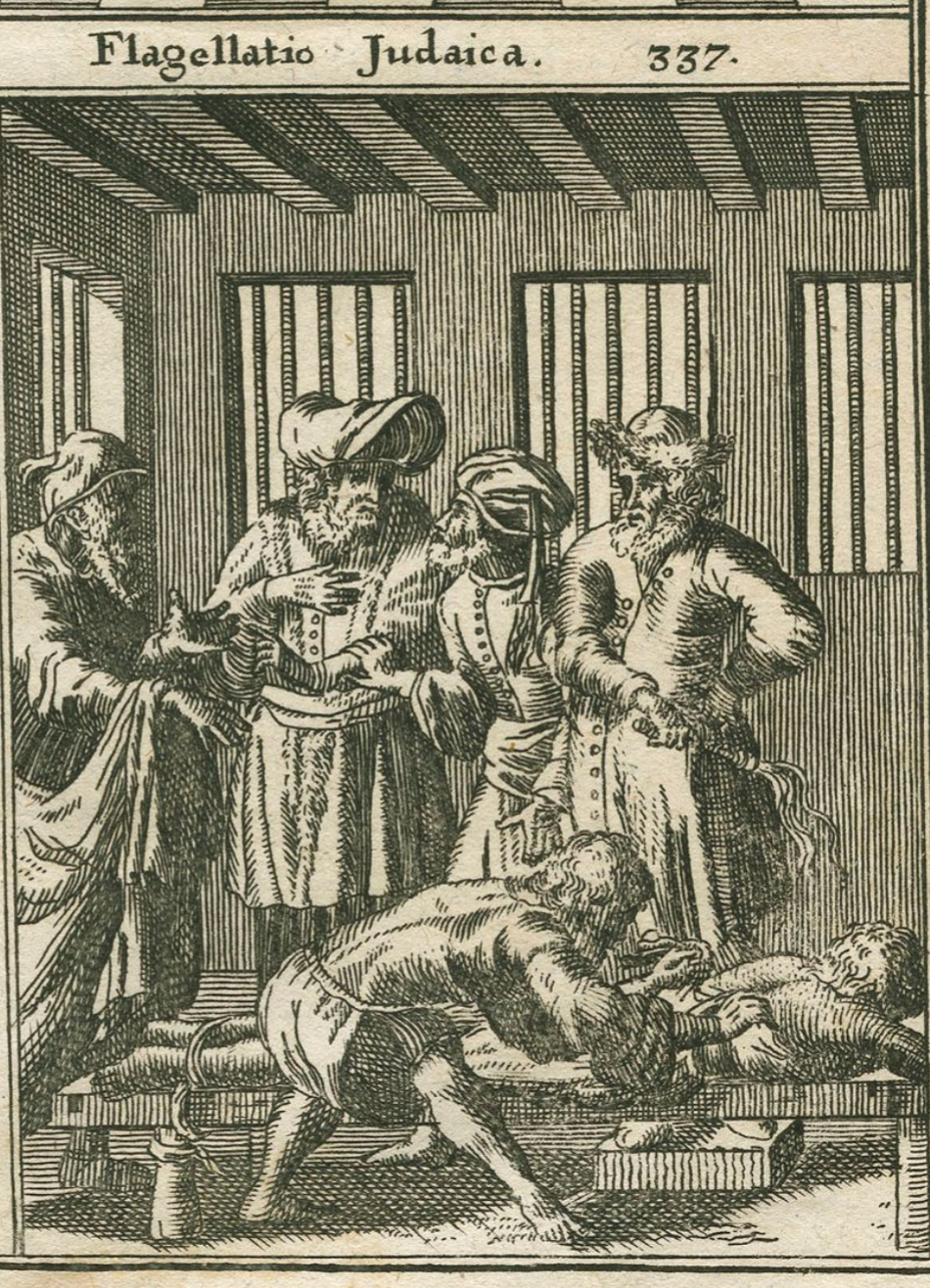|
613 Mitzvot
The Jewish tradition that there are 613 commandments ( he, תרי״ג מצוות, taryag mitzvot) or mitzvot in the Torah (also known as the Law of Moses) is first recorded in the 3rd century AD, when Rabbi Simlai mentioned it in a sermon that is recorded in Talmud Makkot 23b. The 613 commandments include "positive commandments", to perform an act (), and "negative commandments", to abstain from certain acts (). The negative commandments number 365, which coincides with the number of days in the solar year, and the positive commandments number 248, a number ascribed to the number of bones and main organs in the human body. Although the number 613 is mentioned in the Talmud, its real significance increased in later medieval rabbinic literature, including many works listing or arranged by the . The most famous of these was an enumeration of the 613 commandments by Maimonides. Many of the cannot be currently observed, following the destruction of the Second Temple, though they ... [...More Info...] [...Related Items...] OR: [Wikipedia] [Google] [Baidu] |
Judaism
Judaism ( he, ''Yahăḏūṯ'') is an Abrahamic, monotheistic, and ethnic religion comprising the collective religious, cultural, and legal tradition and civilization of the Jewish people. It has its roots as an organized religion in the Middle East during the Bronze Age. Modern Judaism evolved from Yahwism, the religion of ancient Israel and Judah, by the late 6th century BCE, and is thus considered to be one of the oldest monotheistic religions. Judaism is considered by religious Jews to be the expression of the covenant that God established with the Israelites, their ancestors. It encompasses a wide body of texts, practices, theological positions, and forms of organization. The Torah, as it is commonly understood by Jews, is part of the larger text known as the ''Tanakh''. The ''Tanakh'' is also known to secular scholars of religion as the Hebrew Bible, and to Christians as the "Old Testament". The Torah's supplemental oral tradition is represented by later tex ... [...More Info...] [...Related Items...] OR: [Wikipedia] [Google] [Baidu] |
Tefillin
Tefillin (; Modern Hebrew language, Israeli Hebrew: / ; Ashkenazim, Ashkenazic pronunciation: ), or phylacteries, are a set of small black leather boxes with leather straps containing scrolls of parchment inscribed with verses from the Torah. Tefillin are worn by adult Jews during weekday morning prayers. In Orthodox Judaism, Orthodox and traditional communities, they are worn solely by men, while some Reform Judaism , Reform and Conservative Judaism, Conservative (Masorti) communities allow them to be worn by both men and women. By traditional Jewish Law (halacha), women are exempt from most time-dependent positive commandments. Although "tefillin" is technically the plural form (the singular being "tefillah"), it is often used as a singular as well. The arm-tefillah (or ''shel yad'' [literally "of the hand"]) is placed on the upper (non-dominant) arm, and the strap wrapped around the forelimb, hand and middle finger; while the head-tefillah (or ''shel rosh'' [literally "of the ... [...More Info...] [...Related Items...] OR: [Wikipedia] [Google] [Baidu] |
Bamidbar Rabbah
Numbers Rabbah (or Bamidbar Rabbah in Hebrew) is a religious text holy to classical Judaism. It is a midrash comprising a collection of ancient rabbinical homiletic interpretations of the book of Numbers (''Bamidbar'' in Hebrew). In the first printed edition of the work (Constantinople, 1512), it is called ''Bamidbar Sinai Rabbah''. Nahmanides (1194–c. 1270) and others cite it frequently by the same name. It is the latest component of Midrash Rabbah on the Torah, and as such was unknown to Nathan ben Jehiel (c. 1035–1106), Rashi (1040–1105), and Yalkut Shimoni. Relation to Tanchuma Numbers Rabbah consists of two parts, which are of different origin and extent. The first portion, sections 1–14 (on Torah portions Bamidbar and Naso) — almost three-quarters of the whole work — contains a late homiletic commentary upon . The second part, sections 15–33, reproduces the Midrash Tanchuma from almost word for word. Midrash Tanchuma generally covered in each case only a ... [...More Info...] [...Related Items...] OR: [Wikipedia] [Google] [Baidu] |
Shemot Rabbah
Exodus Rabbah (Hebrew: שמות רבה, ''Shemot Rabbah'') is the midrash to Exodus. Contents Exodus Rabbah is almost purely aggadic in character. It contains 52 sections. It consists of two sections with different styles, dubbed "Exodus Rabbah I" (sections 1–14, covering Exodus chapters 1–10) and "Exodus Rabbah II" (sections 15–52), which were written separately and later joined.Encyclopaedia JudaicaExodus Rabbah/ref> Leopold Zunz ascribes the composition of the entire work to the 11th or 12th century; although, immediately following Bereshit Rabbah in the collection of the rabbot, it "is separated from the latter by 500 years".''G. V.'' p. 256 It was first quoted by Azriel of Gerona and then by Nachmanides, placing its composition no later than the early 13th century. [...More Info...] [...Related Items...] OR: [Wikipedia] [Google] [Baidu] |
Midrash
''Midrash'' (;"midrash" ''Random House Webster's Unabridged Dictionary''. he, מִדְרָשׁ; or מִדְרָשׁוֹת ''midrashot'') is expansive Biblical exegesis using a rabbinic mode of interpretation prominent in the . The word itself means "textual interpretation", "study", or " exegesis", derived from the root verb (), which means "resort to, seek, seek ... [...More Info...] [...Related Items...] OR: [Wikipedia] [Google] [Baidu] |
Aggadah
Aggadah ( he, ''ʾAggāḏā'' or ''Haggāḏā''; Jewish Babylonian Aramaic: אַגָּדְתָא ''ʾAggāḏəṯāʾ''; "tales, fairytale, lore") is the non-legalistic exegesis which appears in the classical rabbinic literature of Judaism, particularly the Talmud and Midrash. In general, Aggadah is a compendium of rabbinic texts that incorporates folklore, historical anecdotes, moral exhortations, and practical advice in various spheres, from business to medicine. Etymology The Hebrew word ''haggadah'' (הַגָּדָה) is derived from the Hebrew root נגד, meaning "declare, make known, expound", also known from the common Hebrew verb להגיד.Berachyahu Lifshitz, "Aggadah Versus Haggadah : Towards a More Precise Understanding of the Distinction", ''Diné Yisrael'' 24 (2007): page 23 (English section). The majority scholarly opinion is that the Hebrew word ''aggadah'' (אַגָּדָה) and corresponding Aramaic ''aggadta'' (אַגָּדְתָא) are variants of ''h ... [...More Info...] [...Related Items...] OR: [Wikipedia] [Google] [Baidu] |
Eliezer Ben Jose
Eliezer ben Jose ( Heb. ''Eliezer ben Yose HaGelili'') was a Jewish rabbi who lived in Judea in the 2nd century. He was the son of Jose the Galilean, and is regarded as a tanna of the fourth generation. He was a pupil of Rabbi Akiva. Career and teachings While he cultivated both the halakha and the aggadah, his fame rests mainly on his work in the latter field. Indeed, later generations said, "Wherever you meet a word of R. Eliezer ben R. Jose HaGelili in the aggadah, make your ear like a funnel." Even where he touched on the Halakha, he always brought exegesis to bear upon the matter. Thus, arguing that after legal proceedings are closed the beit din may not propose a compromise, he says, "The judge who then brings about a settlement is a sinner; and he who blesses him is a blasphemer, of whom it may be said "He blesses the compromiser, he spurns the Lord". The Law must perforate the mountain (i.e., must not be set aside under any considerations); for thus the Bible says, ' ... [...More Info...] [...Related Items...] OR: [Wikipedia] [Google] [Baidu] |
Simeon Ben Azzai
Simeon ben Azzai or simply Ben Azzai ( he, שמעון בן עזאי) was a distinguished tanna of the first third of the 2nd century. Biography Ben Azzai is sometimes called "Rabbi", but, in spite of his great learning, this title did not rightfully belong to him, for he remained all his life in the ranks of the "talmidim" or "talmidei hakhamim" (pupils or disciples of the wise). Ben Azzai and Ben Zoma were considered in the tannaitic school-tradition as the highest representatives of this degree in the hierarchy of learning. Ben Azzai is especially named as an eminent example of a "pupil who is worthy of the hora'ah," of the right of independent judgment in questions of religious law. Ben Azzai was close to the leaders of the school of Jabneh. On the same day, he (1) handed down "from the mouth of 72 elders" present a halakhic decision (which was accepted in Jabneh on the day when Eleazar ben Azariah was elected president in the place of Gamaliel II) and also (2) resolved t ... [...More Info...] [...Related Items...] OR: [Wikipedia] [Google] [Baidu] |
Ten Commandments
The Ten Commandments ( Biblical Hebrew עשרת הדברים \ עֲשֶׂרֶת הַדְּבָרִים, ''aséret ha-dvarím'', lit. The Decalogue, The Ten Words, cf. Mishnaic Hebrew עשרת הדיברות \ עֲשֶׂרֶת הַדִּבְּרוֹת, ''aséret ha-dibrót'', lit. The Decalogue, The Ten Words), are a set of biblical principles relating to ethics and worship that play a fundamental role in Judaism and Christianity. The text of the Ten Commandments appears twice in the Hebrew Bible: at Exodus and Deuteronomy . According to the Book of Exodus in the Torah, the Ten Commandments were revealed to Moses at Mount Sinai and inscribed by the finger of God on two tablets of stone kept in the Ark of the Covenant. Scholars disagree about when the Ten Commandments were written and by whom, with some modern scholars suggesting that they were likely modeled on Hittite and Mesopotamian laws and treaties. Terminology The Ten Commandments, called (transliterated ) ... [...More Info...] [...Related Items...] OR: [Wikipedia] [Google] [Baidu] |
Gematria
Gematria (; he, גמטריא or gimatria , plural or , ''gimatriot'') is the practice of assigning a numerical value to a name, word or phrase according to an alphanumerical cipher. A single word can yield several values depending on the cipher which is used. Hebrew alphanumeric ciphers were probably used in biblical times, and were later adopted by other cultures. Gematria is still widely used in Jewish culture. Similar systems have been used in other languages and cultures: the Greeks isopsephy, and later, derived from or inspired by Hebrew gematria, Arabic abjad numerals, and English gematria. Although a type of gematria system ('Aru') was employed by the ancient Babylonian culture, their writing script was logographic, and the numerical assignations they made were to whole words. The value of these words were assigned in an entirely arbitrary manner and correspondences were made through tables, and so cannot be considered a true form of gematria. Aru was very different ... [...More Info...] [...Related Items...] OR: [Wikipedia] [Google] [Baidu] |
Makkoth
Makot (in Hebrew: מכות) (in English: "Lashes") is a tractate of the Mishnah and Talmud. It is the fifth volume of the order of Nezikin. Makkot deals primarily with laws of the Jewish courts ( beis din) and the punishments which they may administer, and may be regarded as a continuation of tractate Sanhedrin, of which it originally formed part. In its scope of application are the topics of: *The false witnesses (''Edim Zomemim'') *The exile in a city of refuge. (''Aray Miklat'') *The lashes administered by the court. (''Makkot'') The third chapter of tractate Makkot enumerates 59 offenses, each entailing lashes. Of these, three are marital sins of priests; four, prohibited inter-marriages; seven, sexual relations of an incestuous nature; eight, violations of dietary laws; twelve, various violations of the negative precepts; twenty-five, abuses of Levitical laws and vows. When the offense has been persisted in, the punishment depends on the number of forewarnings (see Hatra'a ... [...More Info...] [...Related Items...] OR: [Wikipedia] [Google] [Baidu] |
Jacob
Jacob (; ; ar, يَعْقُوب, Yaʿqūb; gr, Ἰακώβ, Iakṓb), later given the name Israel, is regarded as a patriarch of the Israelites and is an important figure in Abrahamic religions, such as Judaism, Christianity, and Islam. Jacob first appears in the Book of Genesis, where he is described as the son of Isaac and Rebecca, and the grandson of Abraham, Sarah, and Bethuel. According to the biblical account, he was the second-born of Isaac's children, the elder being Jacob's fraternal twin brother, Esau. Jacob is said to have bought Esau's birthright and, with his mother's help, deceived his aging father to bless him instead of Esau. Later in the narrative, following a severe drought in his homeland of Canaan, Jacob and his descendants, with the help of his son Joseph (who had become a confidant of the pharaoh), moved to Egypt where Jacob died at the age of 147. He is supposed to have been buried in the Cave of Machpelah. Jacob had twelve sons through fo ... [...More Info...] [...Related Items...] OR: [Wikipedia] [Google] [Baidu] |
.jpg)





